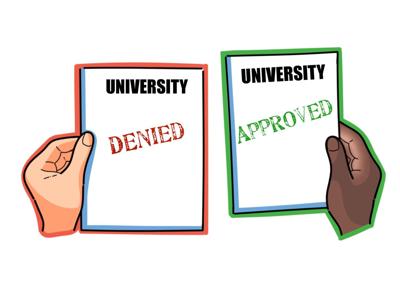On January 24, 2022, the Supreme Court announced that it would reconsider race-conscious affirmative action in college admissions. In particular, Supreme Court justices are willing to hear challenges to affirmative action policies of Harvard and the University of North Carolina, which has the potential for longstanding implications on the use of affirmative action for all college admissions processes. Despite affirmative action having been around since the end of the Civil Rights era, the Supreme Court’s majority conservative composition may well be the singular factor that does away with the decades-old policy.
The case against Harvard’s affirmative action policy argues that it discriminates against Asian Americans through factoring in inherently subjective qualities, such as likability, essentially creating a ceiling for Asian Americans in admissions. The North Carolina case is more straightforward, arguing that White and Asian applicants were being discriminated against due to UNC’s preference for Black, Latinx, and Native American people.
Affirmative action, despite being nothing new, has and continues to spark controversy. Among conservative groups, affirmative action is often equivocated to a bonus-penalty system, in which Black and Latinx people are given extra “points” while White and especially Asian people are deducted “points” purely on the basis of their race. On the other hand, colleges, such as in the UNC case, default to arguing such policy ensures diversity, an essential component to quality education. Despite the array of different arguments in support of or opposition to affirmative action, these conclusions seem to lack either a fundamental understanding of how affirmative action, systemic racism, or diversity work.
It is important to understand that affirmative action is not a tool to diminish the stats of White or Asian people. In reality, race in race-conscious admissions is only considered among equally qualified or comparable candidates. That is to say, a Black, Latinx, or Native American applicant with similar stats to those of a White or Asian applicant would be shown preference in admissions. Of course, college admissions are typically more complex, which is why some race-conscious admissions policies operate not for equally qualified, but similarly qualified applicants. While those critical of affirmative action typically suggest that White and Asian applicants are essentially punished as a result of their race, federal affirmative action guidelines actually prohibit race from being considered as a factor between unqualified candidates.
Survey research suggests that race-conscious admissions among equal or comparably qualified candidates are supported by 75% of Americans. So since this method is what all universities utilize that adopt affirmative action, there is no problem, right? Unfortunately, misconceptions about affirmative action do not erase the fact that affirmative action ultimately falls short in its ability to ensure what it is supposed to: diversity. Colleges are correct in asserting that diversity is a core component of quality education: there is no potential for learning if not for others with different experiences than us shedding light on unique problems and offering unique solutions. However, an exclusive focus on race ignores the multitude of other factors which impact Americans’ perspectives, namely socioeconomic class. Socioeconomic status, much like race, impacts how people live their lives, and thus, what beliefs and values they derive from their experiences. However, college enrollment is incredibly unforgiving to lower-income applicants. As for-profit institutions, colleges are not exclusively seeking qualified candidates, but also money from potential donors. Thus, those from wealthy backgrounds or connections to the school are immediately prioritized. As such, it is ingenuine for universities to claim to endorse policy for the sake of diversity when there are distinct policies put in place placing profit above the education of their students.
Overall, affirmative action does have its benefits. Several studies, particularly Assessing affirmative action: Past, present, and future by Murrell and Jones in 1996, note that there have been important gains in racial and gender diversity ever since affirmative action was endorsed by postsecondary educational institutions. However, it is important not to lose sight of the fundamental purpose of affirmative action: improving the educational quality of high education through diversity. As such, race- and gender-conscious admissions are not the only factors relevant in creating a diverse campus; factors that play a large role in how people think about the world’s problems, such as socioeconomic status, also must be considered to ensure that education never sleeps.






Be the first to comment on "An Analysis Of Affirmative Action In Light of Supreme Court Case"